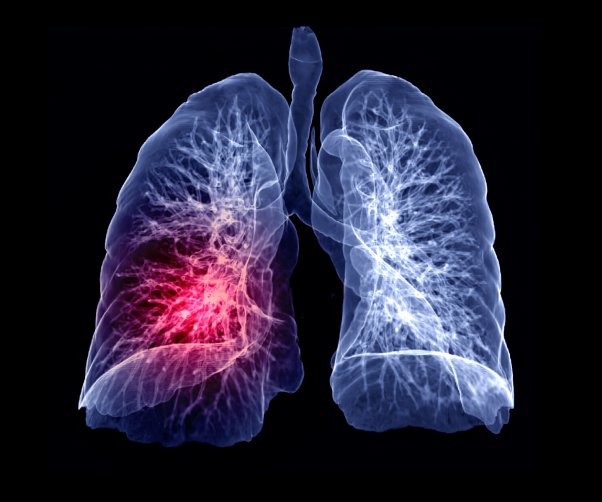
Spots on Your Lungs - What They Mean and How to Treat Them
What are lung nodules?
Many people have lung nodules or “spots on the lung”. They are found incidentally on chest X-rays and CT scans done during medical evaluations all over the country every day. Estimates say up to half of adults may have lung nodules. A lung nodule is an abnormal growth that can form in the lungs. Sometimes, there may be just one, but they can be numerous. Lung nodules are rarely cancerous, and most of them don’t require treatment at all. However, it can be alarming to learn that you have a spot on your lungs, and it can be an early sign of lung cancer.
The vast majority of lung nodules are benign (non-cancerous). They can be caused by respiratory illness, infection and scarring. When an infection or illness inflames the lung tissue, a granuloma can form, which is a small clump of cells. These granulomas can harden and turn into lung nodules if they do not resolve with time. These types of lung nodules are not considered cancers. Other nodules may be due to neoplasms which is an abnormal growth of cells. Some are also benign, but others can include lung cancers. Some common conditions causing lung nodules include:
- Irritants and pollutants in the air
- Autoimmune conditions (such as sarcoidosis and rheumatoid arthritis)
- Fungal infections like histoplasmosis
- Respiratory infection like tuberculosis
- Scar tissue from past exposures
- Lung cancers
What are the risk factors?
Anyone can develop nodules, but some individuals are more likely to have nodules that are cancerous. Risk factors for nodules that may be cancers include:
- Current and former smokers
- Age >65 years
- Larger nodules (>12 mm)
- A family history of cancer
- History of radiation to the chest
- Exposure to asbestos, radon, or secondhand smoke
Most pulmonary nodules do not come with noticeable symptoms. However, larger nodules may press against other structures and cause symptoms like cough, wheezing or shortness of breath.
What is the treatment?
If you have pulmonary nodules, then additional workup may be recommended to find the cause or rule out cancer. Frequently, the only recommendation will be for “active surveillance” with repeat imaging studies after several months or a year have passed. Nodules that remain the same over an extended period of surveillance (up to 2 years) are not likely to be cancer. Further testing may be requested for nodules that are larger or appears to be growing over time. Additional testing might include but is not limited to:
- Bronchoscopy- a procedure where a thin, flexible tube called a bronchoscope is guided down your throat and into the lungs. You would require sedation for this procedure. A tiny instrument on the end of the scope can take tissue samples if an area of concern is identified.
- CT-guided needle biopsy- a tissue sample done through the skin using imaging guidance and a hollow needle for lung nodules that are on the periphery of the lungs.
- Positron emission tomography scan (PET scan)- a special type of imaging that uses an injectable radiotracer to detect cancerous cells in organs. If this shows concerning findings, then a biopsy will typically be recommended.
- Specialized blood tests- designed to help risk stratify nodules that may be more or less likely to be cancerous and help guide further decisions making
Small non-cancerous lung nodules don’t typically require any treatment. Less often, you may need antibiotics or antifungals to treat an underlying infection. If nodules grow or are proven to be cancerous, then treatment is usually needed. In the event of early lung cancers, surgery is frequently recommended to remove these nodules.
SUBSCRIBE TO OUR BLOG
and you'll receive more health & wellness tips right in your inbox.
SUBSCRIBE NOWLung Nodule Clinic
Our office contacts the patient’s primary care physician to establish follow-up and management.
This program provides the following benefits to patients:
- Reduced nodule detection to treatment time from 12 weeks to four weeks or less
- When indicated, we are able to quickly obtain PET CT and biopsies and may be able to expedite a diagnosis and treatment plan.
- Has detected several unsuspected lung cancers, for which patients are currently receiving treatment.
Lung Cancer Screening
Primary care providers can now order a low-dose CT of the chest for patients who meet the following criteria:
- People between the ages of 55-77
- If you have a smoking history of 30 years or greater
- If you are a current smoker or have quit smoking within the last 15 years
Screening patients for lung cancer has been shown to decrease lung cancer mortality by 20%. Many insurance companies, including Medicare, cover the test. Patients are screened annually for 3 consecutive years.
Hearing the words “lung cancer” can be very stressful. It is normal to be worried and anxious when there is even a small chance you might have cancer.
Questions about lung nodule treatment or screenings?
If you have lung nodules, then a healthcare provider with expertise in lung nodules can discuss them with you and help guide the next steps. We at Methodist LeBonheur Healthcare are proud to operate a specialized lung nodule clinic as part of our Methodist Cancer Institute, which can provide the expertise needed to make recommendations and provide state-of-the-art lung nodule care.
Contact the Methodist Cancer Institute
Talk with a specialist who cares and learn more about risk factors or existing symptoms
Related Articles


